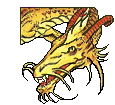 |
 |
 |
 |
 |
 |
 |
 |
 |
 |
 |
 |
![]()
 |
 09-19-2002, 12:43 PM
09-19-2002, 12:43 PM
|
#11 |
|
Gold Dragon
 Join Date: August 11, 2001
Location: The land of blonde virgins
Age: 43
Posts: 2,563
|
Just wanna brag about having met a guy that studied under Bruce Lee's master. He even showed me that one inch punch (at least I think it was that one), of course I was holding about three cushion-like thingies for protection but I still fell almost four metres, and that wasn't even at "full power"
 [ 09-19-2002, 12:44 PM: Message edited by: Sir ReGiN ] |

|
 09-19-2002, 04:19 PM
09-19-2002, 04:19 PM
|
#12 | |
|
Guest
Posts: n/a
|
Quote:
Anyhoo sorry for the confusion |
|
 09-19-2002, 04:26 PM
09-19-2002, 04:26 PM
|
#13 | |
|
Guest
Posts: n/a
|
Quote:
As for the idea people were jumping onto the tops of buildings and flying thru the trees...ummm I would probably rank that folk lore right up there with the feats of Hercules and the strength of Sampson, or the Bow of Ulysses (only Ulysses could bend it) Sounds like the asian version of western myths...the stories get pretty tall in the telling....then again..who really knows? |
|
 09-22-2002, 12:30 AM
09-22-2002, 12:30 AM
|
#14 | |
|
Elite Waterdeep Guard
 Join Date: September 21, 2002
Location: United States
Age: 59
Posts: 16
|
Quote:
As for the nature of martial arts...well, a couple things:1.) Wushu is the traditional name for all manner of martial arts in the general sense. It simply translates as "Great Excercise." Qi, refers to the emanation of internal energy from within the body. 2.) If one reads the great amount of Chinese writing from the dynastic periods, there are numerous references to the use of the martial arts. And in many of these writings (Buddhist or Taoist)the practitioners - usually monks/priests - frequently were said to perform amazing feats of martial prowess. Levitation was a common feat purported to be done. However, as was mentioned by someone in an earlier post, many of the practitioners have taken their art with them (to the grave), while variations have also emerged and hidden or completely changed the original practices/movements of the original. Tai Chi Quan is a prime example. Now, Yang style is the predominant form of the art, with its slow movements. However, originally, the Chen style was the dominant form - it was faster and comprised of many more movements than the Yang. In fact Tai Chi was the most lethal of the martial art forms in China...and the hardest to master. Sorry to take up so much room.
__________________
Betwixt the Stirrup and the Ground- |
|

|
 09-22-2002, 11:12 AM
09-22-2002, 11:12 AM
|
#15 |
|
Emerald Dragon
 Join Date: July 16, 2002
Location: The Abyss
Age: 37
Posts: 904
|
Thanks guys for the feedback it was a great help .... now if KT ONG could see and reply as well.
|

|
 09-22-2002, 11:32 AM
09-22-2002, 11:32 AM
|
#16 |
|
Symbol of Cyric
Join Date: January 27, 2002
Location: Plateau of Singapore
Age: 62
Posts: 1,230
|
To whacky:
I really don't know much about the Chinese martial arts and what I do know is all theory and zero practice [img]tongue.gif[/img] . From what I've read, there are supposed to be two major schools -- the Internal school (which covers such styles as Tai-Chi and Hsing-I) and the External (can't recall any definite styles...). The former is supposed to stress the use of ch'i -- a kind of life force circulating in the body. The latter is supposed to pay more attention to the physical side of things. Will have to read up again to refresh my memory, but for now it might interest you that the ch'i emitted by martial artists was supposed to have been found by scientists to be capable of altering the molecular structure of liquids.  [ 09-22-2002, 11:33 AM: Message edited by: K T Ong ]
__________________
 <br />Look! Everyone\'s admiring me! <img border=\"0\" title=\"\" alt=\"[Big Grin]\" src=\"biggrin.gif\" /> <br />Look! Everyone\'s admiring me! <img border=\"0\" title=\"\" alt=\"[Big Grin]\" src=\"biggrin.gif\" />
|

|
 09-22-2002, 08:04 PM
09-22-2002, 08:04 PM
|
#17 | |
|
Emerald Dragon
 Join Date: July 16, 2002
Location: The Abyss
Age: 37
Posts: 904
|
Quote:
|
|

|
 09-23-2002, 03:04 AM
09-23-2002, 03:04 AM
|
#18 |
|
Fzoul Chembryl
Join Date: February 19, 2002
Location: Your guess is as good as mine.
Age: 54
Posts: 1,728
|
Hey Whacky, I found something here regrading Chi or better known as "Qi". Just some basic explanation and marketing stuff.
And here is another site which covers a little bit of each. [ 09-23-2002, 03:20 AM: Message edited by: Paladin2000 ]
__________________
(This is an invisible sig.) |

|
 09-23-2002, 03:34 AM
09-23-2002, 03:34 AM
|
#19 | |
|
Symbol of Cyric
Join Date: January 27, 2002
Location: Plateau of Singapore
Age: 62
Posts: 1,230
|
Quote:
Basically, ch'i (qi if you use Pinyin romanization) actually just means 'gas' or 'vapor'. Nothing special. But by extension there are also other meanings for this term, such as 'aura', 'emanation' or 'atmosphere'. The term ch'i is also very much part of the Chinese language even today -- not just found only in ancient books, sorry [img]tongue.gif[/img] -- and in this respect a look at the common usage of the term in various situations can offer yet further clues as to what it can mean. Thus a lively person is said to be 'brimming with the ch'i of the dawn', a dark, desolate and depressing place can be described as 'laden with the ch'i of death', a humid place can be said to have a lot of 'ch'i of dampness', one who is real angry can complain of 'being ch'ied to death', and so on. Try and see what the different meanings have in common. Think of something subtle and diffused, with no visible shape or form, which you can sense nevertheless and which can also exert definite physical effects on things. In its 'raw' state, ch'i may be thought of as energy diffused throughout space (Needham opted for the term matter-energy) and manifesting itself in different specific 'varieties', such as the ones mentioned earlier. But this picture of ch'i would warrant some qualification, because it would have to be living energy, not the dead, brute energy of modern physics. All creation is thought of as immersed in this boundless ocean of living energy; in fact all creation is a temporary 'condensation' of this living energy into definite forms. And every living thing receives sustanence from this ocean of energy. This last point is the crux: if it is true, it makes sense to seek to tap into this energy and get more of it in one's body to promote one's health, and to make oneself capable of holding more of it. And theoretically at least, it may also be possible to build up a sufficient store of ch'i energy in oneself to employ in combat, either by raising one's physical attributes to superlative levels through nourishing one's body with this ch'i, or by actually projecting ch'i missiles [img]tongue.gif[/img] . All this forms the rationale behind ch'i-kung (qigong if you use Pinyin romanization) and the Internal martial arts -- not to mention many of the countless wu-hsia novels (Pinyin romanization: wuxia) so popular among the Chinese, in which authors fantasize about different schools of martial arts each with its own highly fanciful methods of building up and using the ch'i, plus side effects etc. Dunno if Ryu's 'Hadoken!' is possible -- I've seen nothing of the kind in real life  -- but I think there's already sufficient evidence to suggest that ch'i is not entirely hogwash. It's to be regretted that there doesn't seem much serious academic research on the reality of ch'i, though. -- but I think there's already sufficient evidence to suggest that ch'i is not entirely hogwash. It's to be regretted that there doesn't seem much serious academic research on the reality of ch'i, though.Hope all that has been of some help. Here's a decent website about ch'i-kung (qigong), BTW. (Would you also be interested in any books?) [ 09-23-2002, 04:26 AM: Message edited by: K T Ong ]
__________________
 <br />Look! Everyone\'s admiring me! <img border=\"0\" title=\"\" alt=\"[Big Grin]\" src=\"biggrin.gif\" /> <br />Look! Everyone\'s admiring me! <img border=\"0\" title=\"\" alt=\"[Big Grin]\" src=\"biggrin.gif\" />
|
|

|
| Currently Active Users Viewing This Thread: 1 (0 members and 1 guests) | |
|
|
 Similar Threads
Similar Threads
|
||||
| Thread | Thread Starter | Forum | Replies | Last Post |
| Polynesian Culture / Hawaiian Culture | Larry_OHF | General Discussion | 3 | 03-08-2005 08:37 AM |
| Compensation Culture Spreads Across Atlantic | Timber Loftis | General Discussion | 2 | 07-13-2004 11:26 PM |
| Off Topic: What is the culture of Tethyr? | Bredalbane | Baldurs Gate II: Shadows of Amn & Throne of Bhaal | 2 | 12-17-2003 12:47 PM |
| The Goth Culture | Iron_Ranger | General Conversation Archives (11/2000 - 01/2005) | 31 | 02-09-2003 03:51 AM |
| Language and foreign culture | AliCat | General Conversation Archives (11/2000 - 01/2005) | 41 | 11-05-2002 05:29 AM |